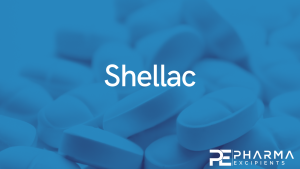Influence of shellac on the improvement of solubility and supersaturation of loratadine amorphous solid dispersion using a new grade of HPMC

The use of ternary amorphous solid dispersions (ASDs) comprised of surfactants and synthetic polymers to improve the solubility of low water soluble active pharmaceutical ingredients (APIs) have been widely investigated as an emerging concept. Shellac is used as complex resin for coating purposes, but to the best of our knowledge, the use of shellac as natural excipient in ASDs has not been reported.
The current study has sought to prepare binary and ternary ASDs of shellac, alone or in combination with HPMC, with the model API loratadine (LOR) via spray drying and hot melt extrusion to achieve solubility improvement and supersaturation maintenance. The ASDs were characterized and tested for their in-vitro dissolution performance. Among various shellac fractions within the ternary ASDs, the 10% weight fraction was found to increase the solubility 30 folds and maintain the supersaturation for 3 h compared to other binary and ternary formulations. This superiority was due to specific and stronger API matrix interactions detected via ATR-IR, which was further studied in terms of stability. It was found that there exists a correlation between the amount of the dissolved API and the API crystallinity, which dictates the level of supersaturation.
While the crystallinity is set by the LOR concentration at the end of the test, the dissolution rate depended on the origin of the crystals. Continue on Influence of shellac on the improvement of solubility and supersaturation of loratadine amorphous solid dispersion using a new grade of HPMC
Keywords: Amorphous solid dispersion, Shellac, HPMC – Affinisol® HPMC HME 15 LV , Hot melt extrusion, Spray drying, Stability
Read more on Shellac as a pharmaceutical excipient here:


